Photographs by the author. [You may use these images without prior permission for any scholarly or educational purpose as long as you (1) credit the photographer and (2) link your document to this URL in a web document or cite the Victorian Web in a print one.

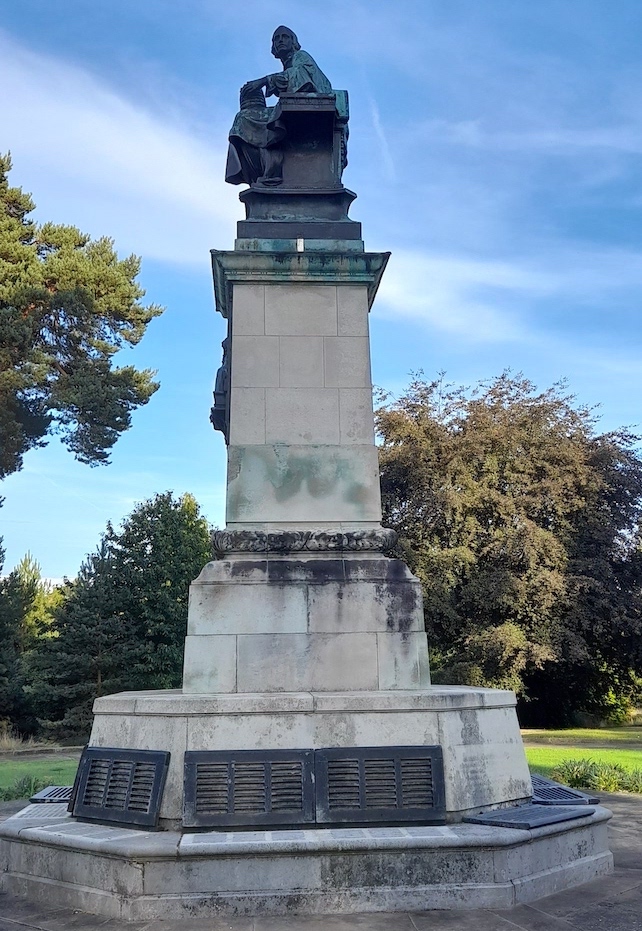
Monument to William Whiteley by Sir George Frampton, RA (1860-1928). 1914. Stone, with integral benches round the base; a copper profile bust of Whiteley in bas-relief above; and a seated figure on the top, also in copper, symbolising industry. c. 25 feet high (see "William Whiteley Memorial"). Monument Green, Whiteley Village, Hersham, Surrey.
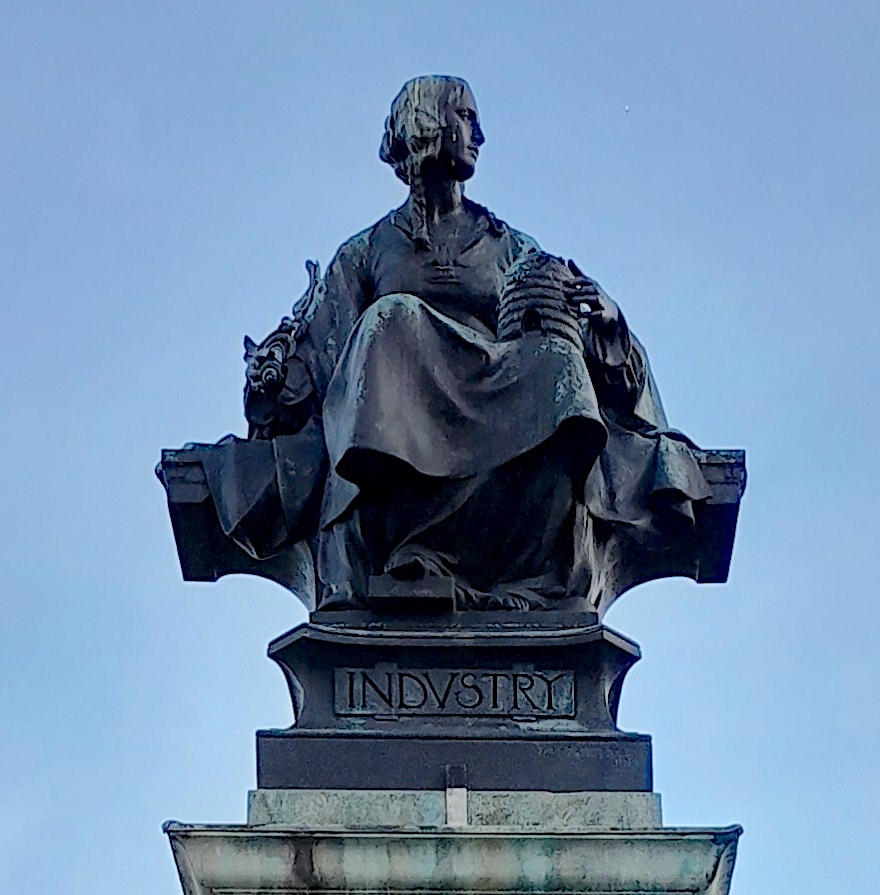
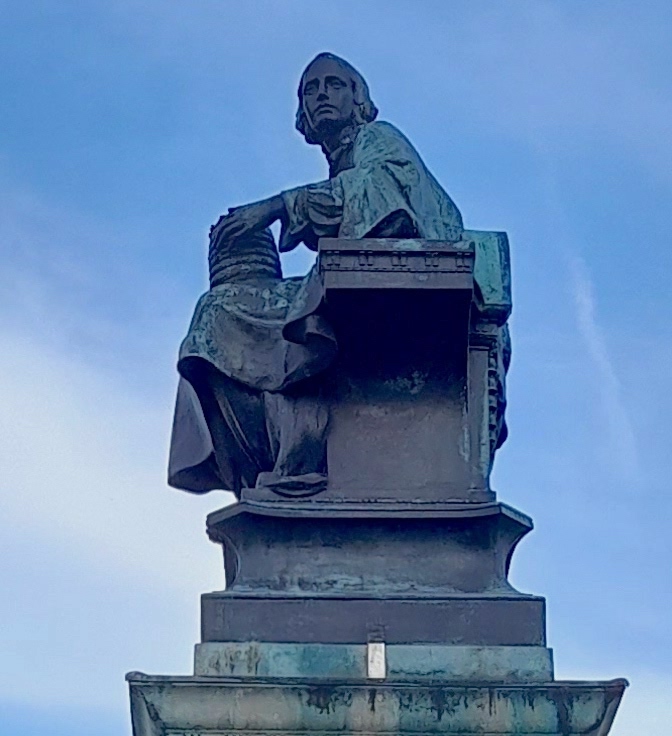
The most distinctive feature of the monument is its crowning statue of Industry, the word itself inscribed just below it. The figure holds a small traditionally-shaped beehive balanced on one knee. In her other hand she holds a caduceus, symbolic of a particular kind of "busy-ness" — commerce. Whiteley (1831-1907) was the enterprising self-made man who established and built up Whiteley's very successful department store in the Bayswater district of London (itself graced with some fine sculptural decoration). The seated figure of Industry has a characteristic pose: compare her, for example, with the figure of Peace on Frampton's Queen Victoria statue in Leeds. However, she is very different from the portrait statue on his next monument (see Jezzard 556), the famous one to Edith Cavell. There, the person commemorated would be pre-eminent, and symbolic elements proportionately reduced.
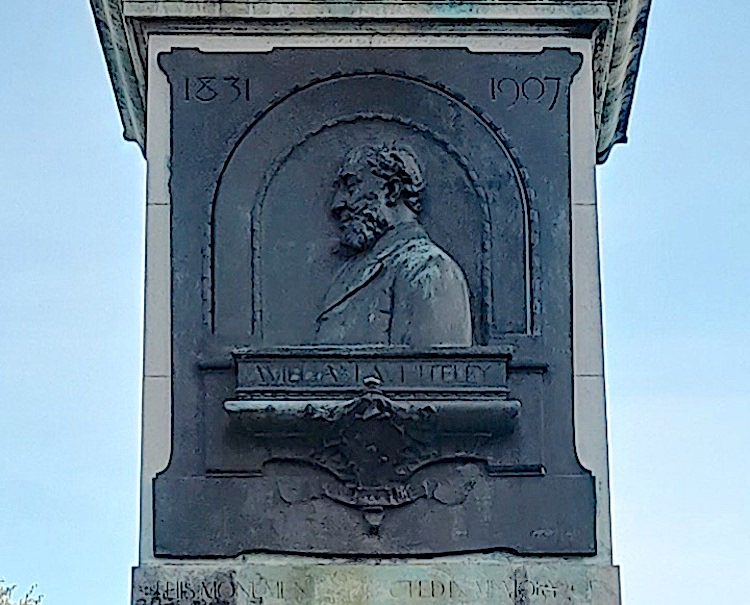

Whiteley, important both locally and at one time in London and beyond, is honoured here because the surrounding village represents the fulfilment of his vision. Although not generally known as a philanthropist, he set in motion and funded a model settlement for retired employees, in a part of Surrey with a reputation for being salubrious (see Nairn et al., 520-21). Unfortunately, Whiteley himself met an untimely and shocking end, murdered at his office door by a younger man who claimed to be his (rejected) illegitimate son. The case was a sensational one, with much sympathy for the murderer, who perhaps acted more in desperation than in cold blood, and whose death-sentence was lifted. He was released from prison in 1919, about five years after this monument was erected, and about two years after the first residents arrived in the village (see Stratmann 242).
Having given a riveting account of the case, its background and its repercussions, Linda Stratmann finds it surprising that Frampton failed to provide a statue of Whiteley himself, and surprising too that his plan for the monument was approved. But surely the work is sensitively judged, helping us to remember Whiteley for a happier reason, while focussing more on the quality he admired and wished to reward than on the man himself.

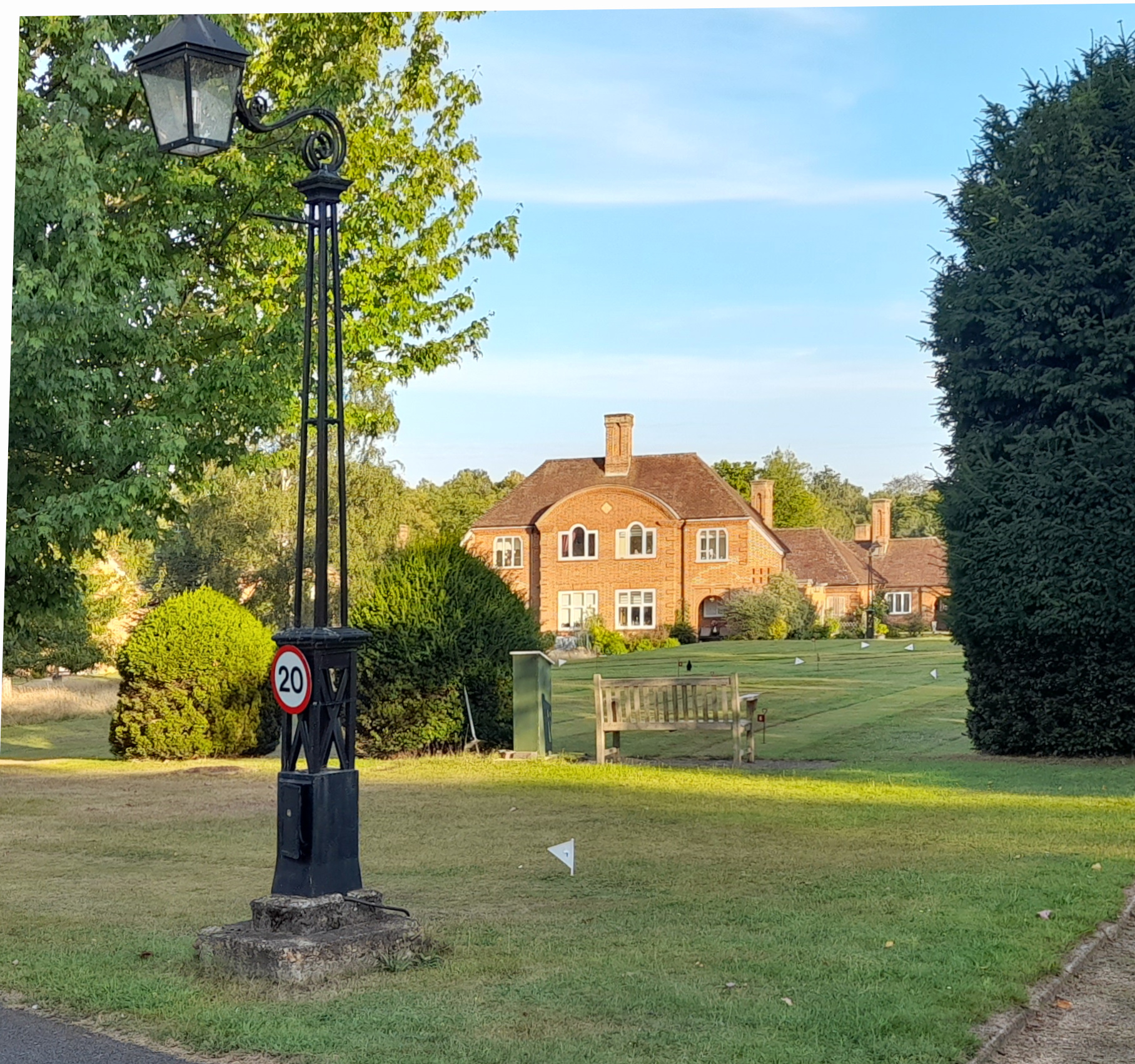
Two views of Whiteley Village give a sense of the monument's idyllically rural but pleasantly residential setting. The plan was influenced by Ebenezer Howard's idea of a Garden Suburb, with the roads laid out in a geometrical arrangement with Monument Green at its heart. As a community, still with a charitable basis (it is largely for those of limited means, although some accommodation can be bought), with its own amenities, the village is still thriving today.
Bibliography
Jezzard, Andrew. The Sculptor Sir George Frampton. Unpublished thesis for the University of Leeds, 1999. Web. 21 September 2023.
Nairn, Ian, and Nikolaus Pevsner, rev. Bridget Cherry. The Buildings of England: Surrey. 2nd ed. London: Penguin, 1971.
Stratmann, Linda. Whiteley's Folly: The Life and Death of a Salesman. Stroud, Glos.: Sutton, 2004.
William Whiteley Memorial." Historic England. Web. 21 September 2023.
Created 21 September 2023